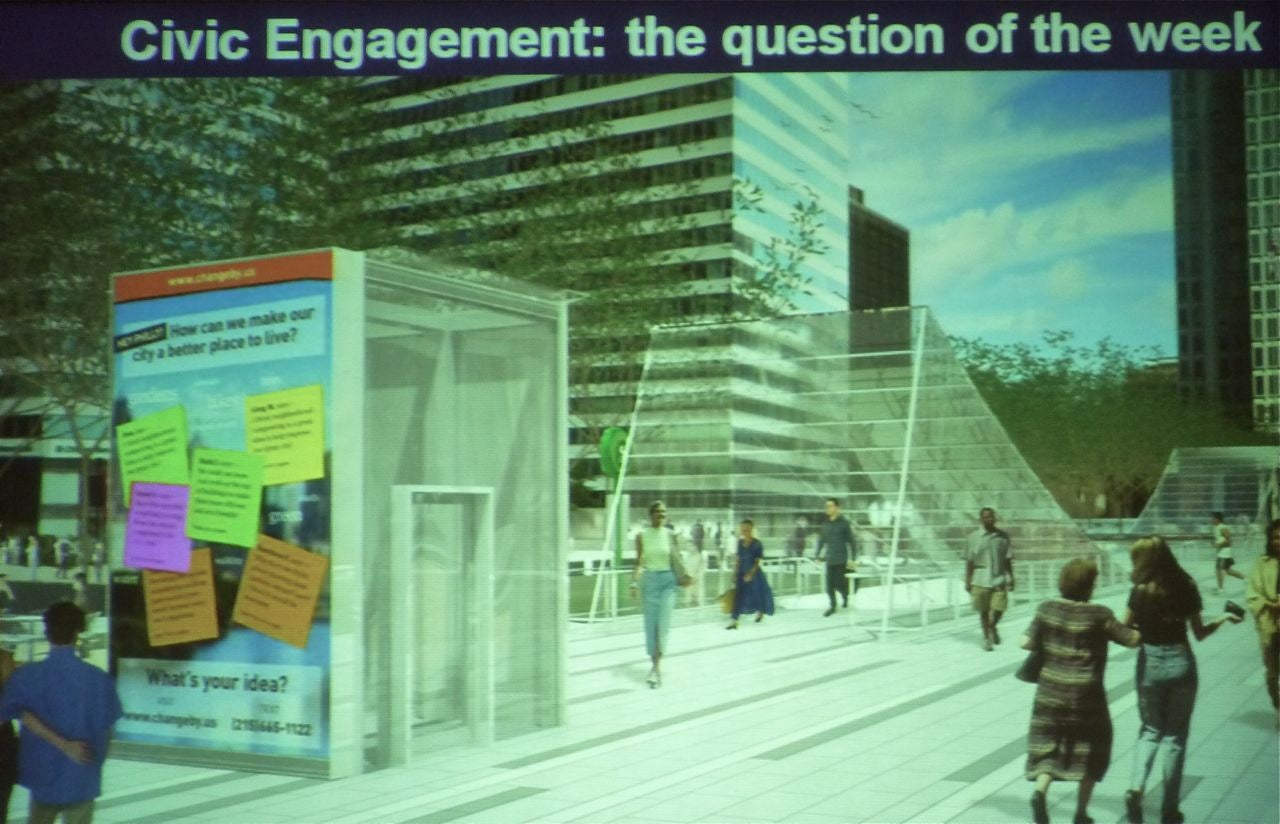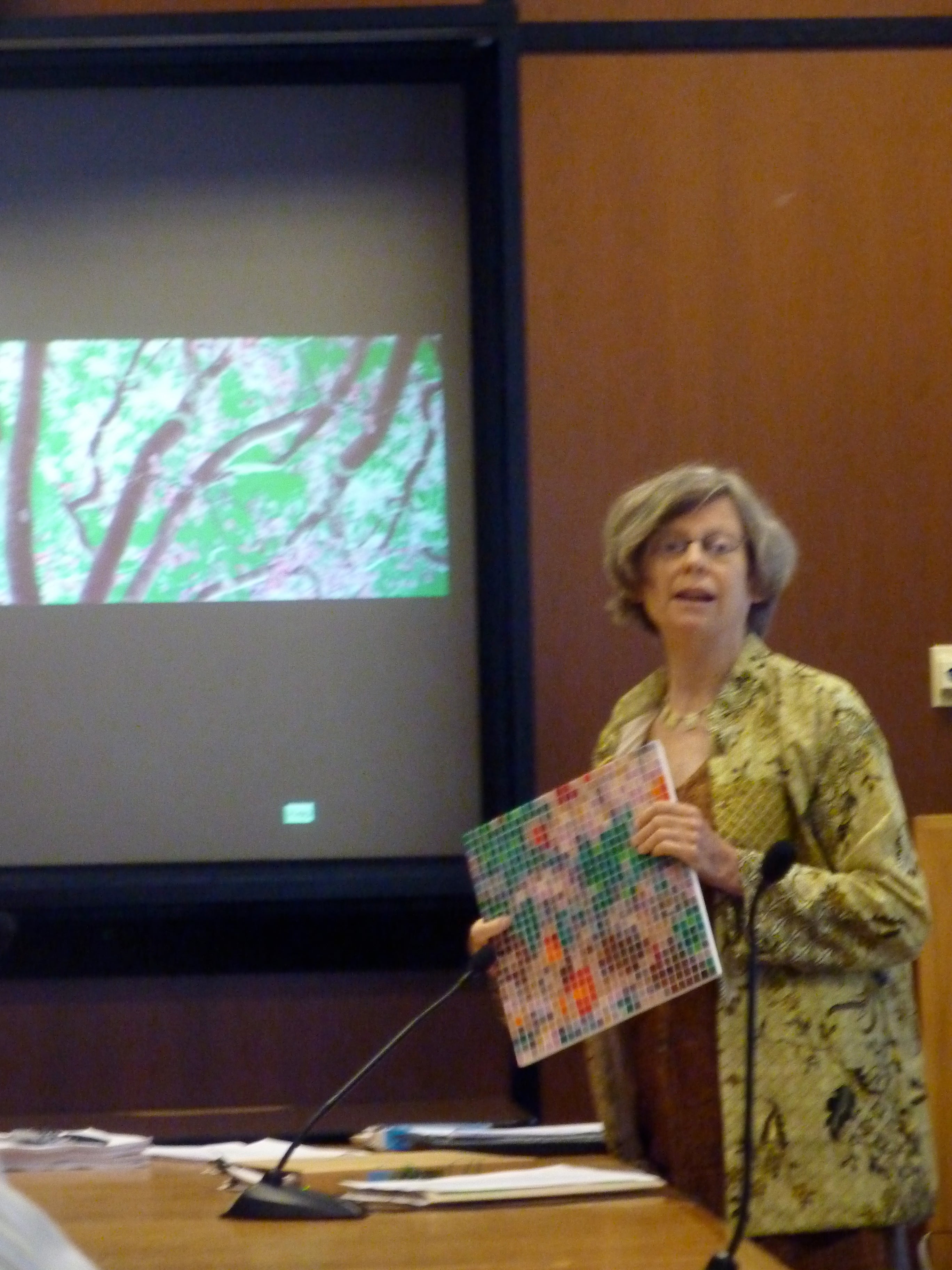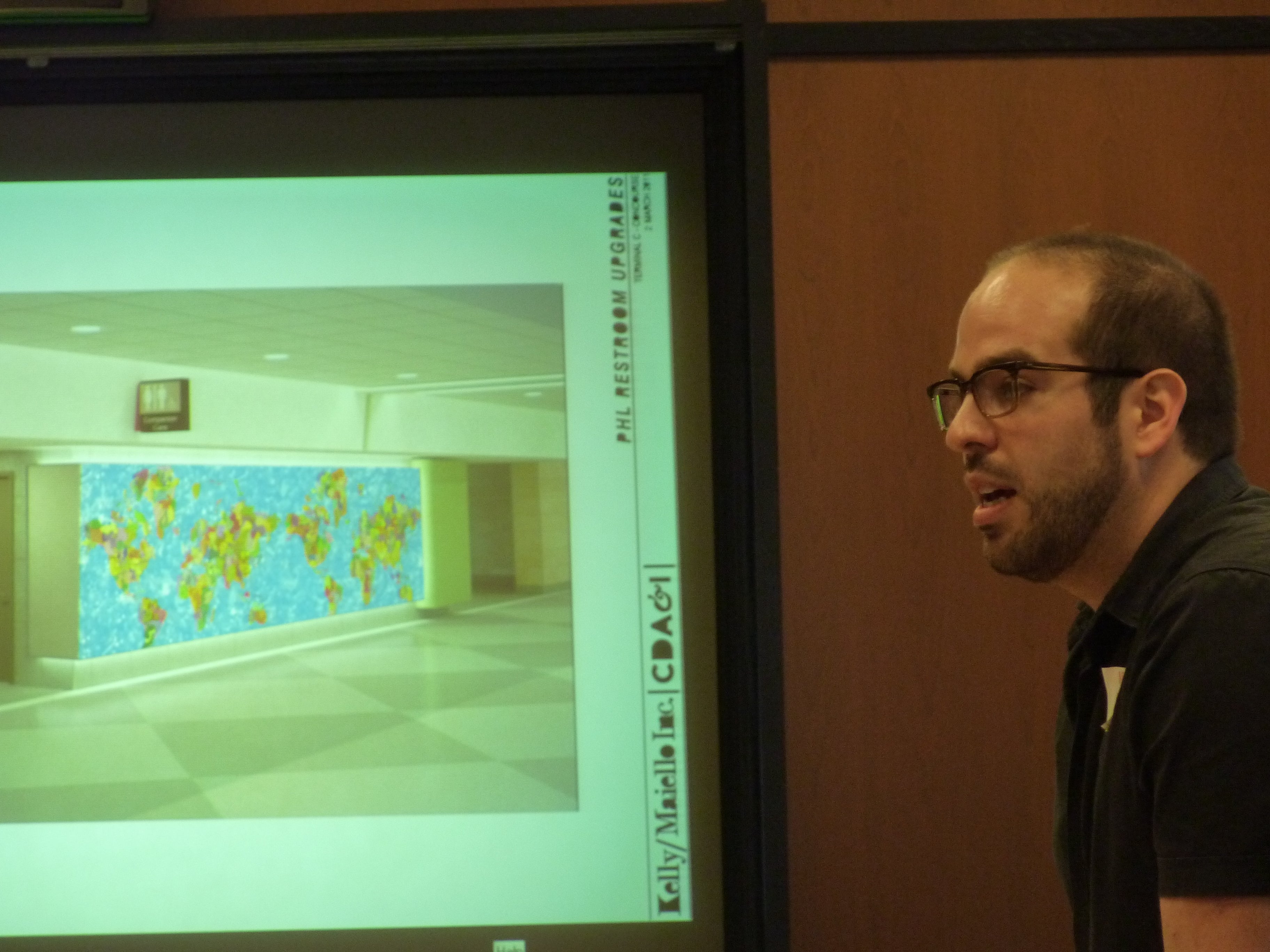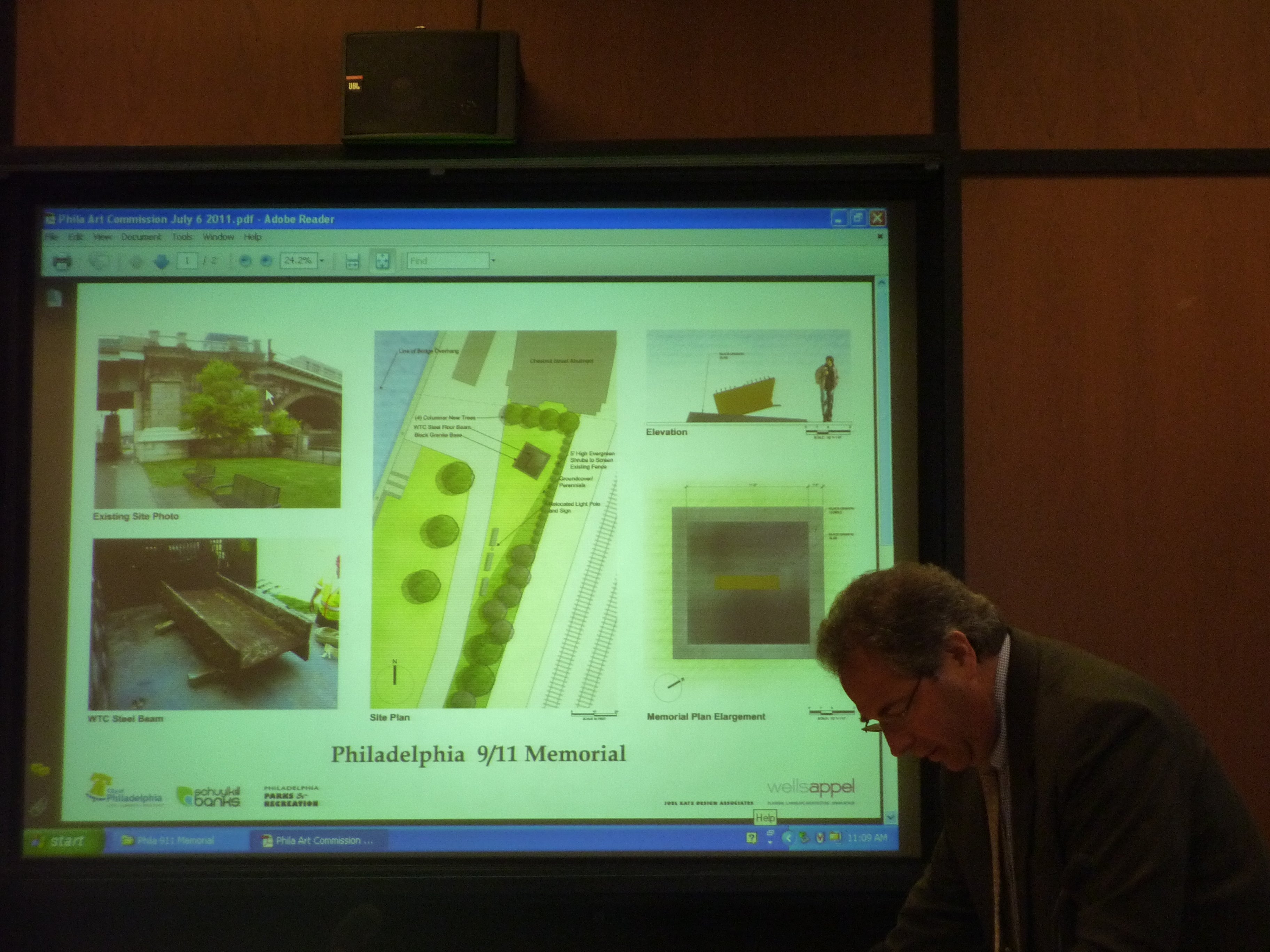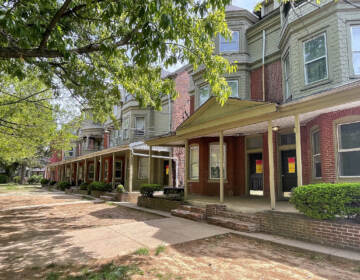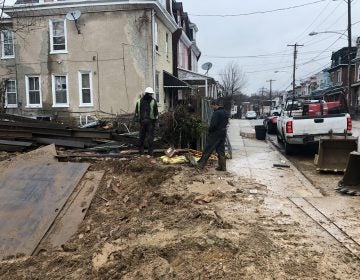Art Commission gives final nods to Dilworth Plaza, 9/11 Memorial
The Art Commission Wednesday awarded final approval to several more elements of the reworked Dilworth Plaza outside of City Hall, and gave an enthusiastic go-ahead to a fast track memorial dedicated to 9/11 and the three Philadelphians who lost their lives at the World Trade Center.
Concepts for the latter project received their first public viewing, since the Schuylkill River Development Corp. was only awarded the piece of structural steel from one of the twin towers two week ago. Stuart Appel of WellsAppel, the landscape architects selected to design the memorial, said that the hope is to unveil the work on the Chestnut Street bank of the Schuylkill River by the end of September.
The rusted steel is, of course, the central part of the memorial, which will be placed in a lawn setting. The beam will sit perched at an angle, pointing northward toward New York City, and will be embedded into a reflective slab of black granite.
The design intends to convey notions of imbalance and instability, Appel said, adding that his team was currently still considering several treatment alternatives for a textual message and the way in which visitors approached the site. After some discussion, Commissioners offered one suggestion: that the orientation of the steel be placed so that its tip, and not its side, be viewed as the “front” of the memorial. Wells agreed that that worked better.
Commissioner Jose Alminana raised the only serious concern, asking if the work might include pavers around it to protect grass from being trod upon. When Appel balked at interfering with the geometry of the design, Fairmount Park executive director Mark Focht offered to look into the possibility and to identify products but to for the time being go pavement-free.
Philadelphia’s major public works project, the reconstruction and redesign of Dilworth Plaza, secured its final city approvals with a presentation by Center City District boss Paul Levy that ran through the various signage and digital readouts that will animate the plaza. Invoking (once again) similar projects in New York and Chicago, Levy demonstrated how some of these installations will convey “stories” about the property’s various historic uses, while others will serve to inform visitors of activities and issues around the city.
It was one much more seemingly innocuous — and smaller — piece of signage at Robin Hood Dell, however, that consumed the greatest amount of time, with Commissioners and applicants talking at cross purposes for nearly 45 minutes. Eventually even the Deputy Mayor for Planning, Alan Greenberger, chimed in from the audience, pleading that the project be pushed along to ensure the viability of the Dell as a performance venue.
The big issue was the height of the sign — presented as a 7′ x 9′ digital readout placed atop two 7-foot poles. Applicants said the height was intended as a cautionary measure against potential vandalism. When Commissioners asked if the sign itself could be made smaller, the applicants raised the question of how good a marketing job it would do if it were too small. Some back and forthing also occurred around whether all or some or none of the sign should be electronic, and how often it should be lit. Finally, Commissioners requested that a new sign be created, one that topped out at 12′ and included a static non-electronic piece bearing the Dell’s name or, failing that, a sign no higher than 10′ that included less pole and a smaller image.
During the three hour meeting, Commissioners also reviewed an addition to the Children’s Zoo at the Philadelphia Zoo, several school additions, a rec center addition, and the installation of solar panels and wind turbines at Lincoln Financial Field. And, it granted final approval to the site and landscaping of a new monument dedicated to Philadelphia’s Scottish immigrants, to be located next to the Irish Memorial at Front and Sansom Streets.
The Commission also granted approval to two mural installations outside of renovated restrooms in terminals B and C at Philadelphia International Airport. The first, presented by artist Ava Blitz, is an abstract floral field image crafted from brightly-hued mosaic tiles. The second, presented by artist Ben Volta, is a work on paper that uses geographically-inspired images created by 5th graders from Grover Washington Jr. School.
Contact the reporter at jgreco@planphilly.com
WHYY is your source for fact-based, in-depth journalism and information. As a nonprofit organization, we rely on financial support from readers like you. Please give today.




